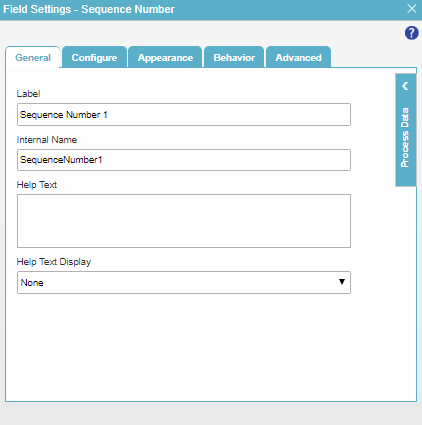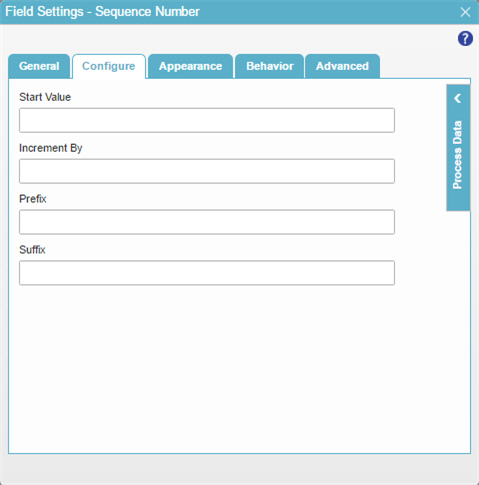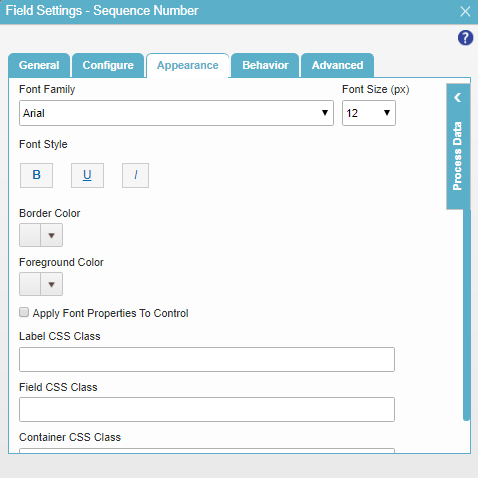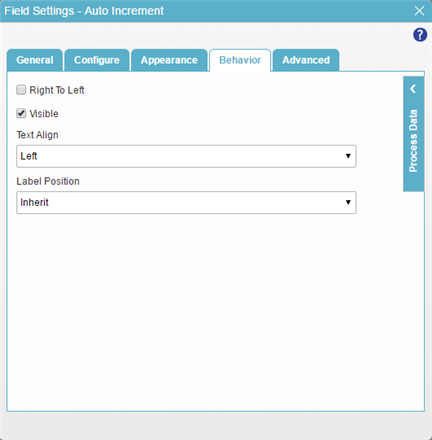Sequence Number form control
A form control that lets you create an alphanumeric string with a number that increments each time a new instance of an eForm starts. You can use the sequence number in this form control for tracking purposes, like a request number.

Configure the Sequence Number form control
To configure
the
Sequence Number  control,
do the procedure in this topic.
control,
do the procedure in this topic.
Video: Common Configuration Settings in eForm Controls
Examples
- (Example) Configure the Sequence Number Form Control
- Examples - Step-by-step use case examples, information about what types of examples are provided in the AgilePoint NX Product Documentation, and other resources where you can find more examples.
Prerequisites
- Microsoft SQL Server 2012 or higher.
Good to Know
How to Start
- On the Application Explorer screen, do one of these:
- Do one of these:
- Add a Sequence Number
 control:
control:
- On the eForm Builder screen, in the Toolbox, open the Advanced Controls
 tab.
tab. - On the Advanced Controls
 tab, drag a Sequence Number
tab, drag a Sequence Number  form control onto your eForm.
form control onto your eForm.
- On the eForm Builder screen, in the Toolbox, open the Advanced Controls
- Change a Sequence Number
 control:
control: - On your eForm, click the control, and click Edit
 .
.
- On your eForm, click the control, and click Edit
- Add a Sequence Number
Procedure
- Complete the settings on the configuration screens. You can use the Process Data screen to specify a variable.
General
Specifies the basic configuration for the Sequence Number form control.

Fields
| Field Name | Definition |
|---|---|
Label |
|
Internal Name |
|
Help Text |
|
Help Text Display |
|
Configure
Specifies detailed configuration settings for your form control.

Fields
| Field Name | Definition |
|---|---|
Start Value |
|
Increment By |
|
Prefix |
|
Suffix |
|
Appearance
Specifies the look and feel for your form control.

Fields
| Field Name | Definition |
|---|---|
Font Family |
|
Font Style |
|
Font Size (px) |
|
Border Color |
|
Foreground Color |
|
Apply Font Properties To Control |
|
Label CSS Class |
|
Field CSS Class |
|
Container CSS Class |
|
Behavior
Specifies how the control shows on your form.

Fields
| Field Name | Definition |
|---|---|
Right To Left |
|
Visible |
|
Text Align |
|
Label Position |
|
Advanced
Specifies advanced settings for your form control.

Fields
| Field Name | Definition |
|---|---|
Field ID |
|
Show In Tablet |
|
Show In Mobile |
|



